| 첨부 '1' |
|---|
| author | Kwangyeol Lee |
|---|---|
| journal | Accounts of Chemical Research |
| Homepage | http://nanolab.korea.ac.kr/ |
Atoms in a bulk solid phase are usually trapped to fixed positions and can change their position only under certain conditions (e.g., at a melting point) due to the high energy barrier of migration between positions within the crystal lattice. Contrary to the atoms in the bulk solid phase, however, atoms in nanoparticles can migrate and change their local positions rather easily, enabled by the high surface energies. The energy states of surface atoms of nanoparticles can be altered by surface-binding moieties, which in turn influence the intrananoparticle migration of atoms at the subsurface of nanoparticles. In 2008, this possibility of intrananoparticle migration was demonstrated with RhPd alloy nanoparticles under the different gas environments of reductive CO or oxidative NO. We envisaged that the explosive expansion of well-defined, multiphasic nanoparticle libraries might be realized by specifically dictating the atom migration direction, by modulating the energy state of specific atoms in the multiphasic nanocrystals. The nanoparticle surface energy is a function of a myriad of factors, namely, surface binding moiety, structural features affecting coordination number of atoms such as nanoparticle geometry, steps, and kinks, and the existence of heterointerface with lattice mismatch. Therefore, all these factors affecting atom energy state in the nanoparticle, categorically termed as “chemical field” (CF), can serve as the driving force for purposeful directional movement of atoms within nanoparticles and subsequent reaction. Geometrically well-defined multiphasic nanocrystals present great promises toward various applications with special emphasis on catalysis and thus are worthy synthetic targets. In recent years, we have demonstrated that manipulation of CFs is an effective synthetic strategy for a variety of geometrically well-defined multiphasic nanocrystals. Herein, we classified multiphasic nanocrystals into metallic alloy systems and ionic systems (metal compounds) because the modes of CF are rather different between these two systems. The migration-directing CFs for neutral metallic atoms are mostly based on the local distribution of elements, degree of alloying, or highly energetic structural features. On the other hand, for the ionic system, structural parameters originating from the discrepancy between cations and anions should be more considered; ionic radii, phase stability, lattice strain, anionic frameworks, cation vacancies, etc. can react as CFs affecting atom migration behavior in the multiphasic ionic nanocrystals. We expect that the limits and potentials of CF-based synthesis of multiphasic nanocrystals described in this work will open a wide avenue to diverse material compositions and geometries, which have been difficult or impossible to approach via conventional nanoparticle synthesis schemes.
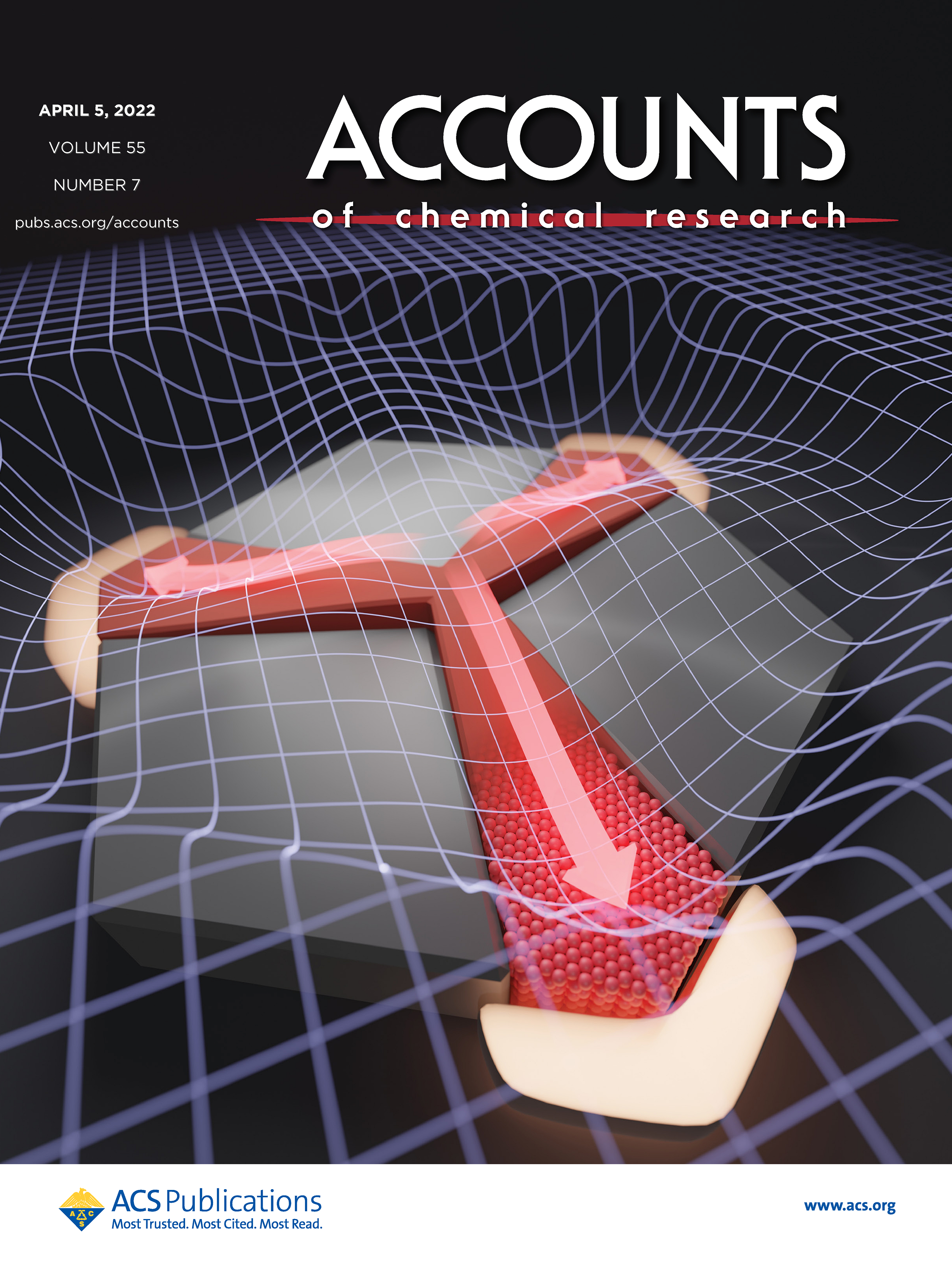
https://pubs.acs.org/doi/10.1021/acs.accounts.1c00745
-
Read More

Microfluidics-Assisted Synthesis of Hierarchical Cu2O Nanocrystal as C2-Selective CO2 Reduction Electrocatalyst
Copper-based catalysts have attracted enormous attention due to their high selectivity for C2+ products during the electrochemical reduction of CO2 (CO2RR). In particular, grain boundaries on the catalysts contribute to the generation of va... -
Read More

Chemical Fields: Directing Atom Migration in the Multiphasic Nanocrystal
Atoms in a bulk solid phase are usually trapped to fixed positions and can change their position only under certain conditions (e.g., at a melting point) due to the high energy barrier of migration between positions within the crystal latti... -
Read More
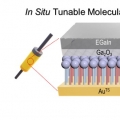
Electronic Mechanism of In Situ Inversion of Rectification Polarity in Supramolecular Engineered Monolayer
This paper describes polarity inversion in molecular rectification and the related mechanism. Using supramolecular engineered, ultrastable binary mixed self-assembled monolayer (SAM) composed of organic molecular diode (SC11BIPY) and inert ... -
Read More
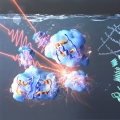
Direct observation of protein structural transitions through entire amyloid aggregation processes in water using 2D-IR spectroscopy
Amyloid proteins that undergo self-assembly to form insoluble fibrillar aggregates have attracted much attention due to their role in biological and pathological significance in amyloidosis. This study aims to understand the amyloid aggrega... -
Read More

Harnessing GLUT1-Targeted Pro-oxidant Ascorbate for Synergistic Phototherapeutics
Despite extensive efforts to realize effective photodynamic therapy (PDT), there is still a lack of therapeutic approaches concisely structured to mitigate the major obstacles of PDT in clinical applications. Herein, we report a molecular s... -
Read More
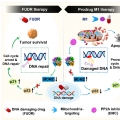
DNA-Damage-Response-Targeting Mitochondria-Activated Multifunctional Prodrug Strategy for Self-Defensive Tumor Therapy
We report a novel multifunctional construct, M1, designed explicitly to target the DNA damage response in cancer cells. M1 contains both a floxuridine (FUDR) and protein phosphatase 2A (PP2A) inhibitor combined with a GSH-sensitive linker. ... -
Read More

Midwavelength Infrared Colloidal Nanowire Laser
Realizing bright colloidal infrared emitters in the midwavelength infrared (or mid-IR), which can be used for low-power IR light-emitting diodes (LEDs), sensors, and deep-tissue imaging, has been a challenge for the last few decades. Here, ... -
Read More
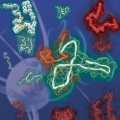
Kinetic Modulation of Amyloid-β (1–42) Aggregation and Toxicity by Structure-Based Rational Design
임동준 (제1저자, 통합과정생) Several point mutations can modulate protein structure and dynamics, leading to different natures. Especially in the case of amyloidogenic proteins closely related to neurodegenerative diseases, structural chang... -
Read More
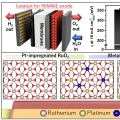
Safeguarding the RuO2 phase against lattice oxygen oxidation during acidic water electrooxidation
Defective RuO2 possesses excellent initial activity toward the oxygen evolution reaction in acidic water electrooxidation due to the involvement of lattice oxygens, which, however, is the very reason for the accelerated dissolution of Ru sp... -
Read More
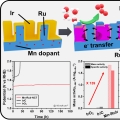
Mn-dopant differentiating the Ru and Ir oxidation states in catalytic oxides toward durable oxygen evolution reaction in acidic electrolyte
Designing an efficient and durable electrocatalyst for the sluggish oxygen evolution reaction (OER) at the anode remains the foremost challenge in developing proton exchange membrane (PEM) electrolyzers. Here we report a highly active and d... -
Read More

Dynamic Water Promotes Lithium-Ion Transport in Superconcentrated and Eutectic Aqueous Electrolytes
김준규(제1저자, 통합과정) Superconcentrated aqueous electrolytes have shown promise as safe and high-voltage lithium-ion battery (LIB) electrolytes. However, the interplay of lithium-ion solvation structure and dynamics with fast Li-ion tra... -
Read More
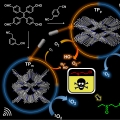
Isomeric sp2-C conjugated Porous Organic Polymer-mediated Photo- and Sono-catalytic Detoxification of Sulfur Mustard Simulant under Ambient Conditions
The development of efficient strategies for the sustainable detoxification of mustard gas simulants has longstanding demand for human safety. Here, we present for the first time a photo- and sono-catalyzed selective detoxification of mustar... -
Read More

Vertical-crystalline Fe-doped β-Ni oxyhydroxides for highly active and stable oxygen evolution reaction
김병윤 (제1저자, 기초과학연구원) The layered transition metal oxyhydroxides have received increasing interest owing to the efficient energy conversion performance and material stability during the oxygen evolution reaction (OER). In particu... -
Read More

Extended Short-Wavelength Infrared Photoluminescence and Photocurrent of Nonstoichiometric Silver Telluride Colloidal Nanocrystals
김가현(제1저자, 석박통합과정) Demands on nontoxic nanomaterials in the short-wavelength infrared (SWIR) have rapidly grown over the past decade. Here, we present the nonstoichiometric silver chalcogenide nanocrystals of AgxTe (x > 2) and Ag... -
Read More
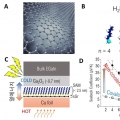
Enhanced Thermopower of Saturated Molecules by Noncovalent Anchor-Induced Electron Doping of Single-Layer Graphene Electrode
Enhancing thermopower is a key goal in organic and molecular thermoelectrics. Herein, it is shown that introducing noncovalent contact with a single-layer graphene (SLG) electrode improves the thermopower of saturated molecules as compared ... -
Read More

Mechanical Force for the Transformation of Aziridine into Imine
Force-selective mechanochemical reactions may be important for applications in polymer mechanochemistry, yet it is difficult to achieve such reactions. This paper reports that cis-N-phthalimidoaziridine incorporated into a macromolecular ba... -
Read More

A Small Molecule Strategy for Targeting Cancer Stem Cells in Hypoxic Microenvironments and Preventing Tumorigenesis
김지현(제1저자, 석박사통합과정 8학기) Breast cancer consists of heterogenic subpopulations, which determine the prognosis and response to chemotherapy. Among these subpopulations, a very limited number of cancer cells are particularly probl... -
Read More

Mitochondria-targeted nanotheranostic: Harnessing single-laser-activated dual phototherapeutic processing for hypoxic tumor treatment
Realizing maximum tumor suppression along with preventing tumor regrowth by optimizing the photon usage in phototherapy remains a major challenge. Herein, a mitochondria-targeted phototheranostic nanoformulation (MsPDTT NPs) was prepared fr... -
Read More

Pd3Pb Nanosponges for Selective Conversion of Furfural to Furfuryl Alcohol under Mild Condition
Alloy structures with high catalytic surface areas and tunable surface energies can lead to high catalytic selectivity and activities. Herein, the synthesis of sponge-like Pd3Pb multiframes (Pd3Pb MFs) is reported by using the thermodynamic... -
Read More

Deep Learning Optical Spectroscopy Based on Experimental Database: Potential Applications to Molecular Design
Accurate and reliable prediction of the optical and photophysical properties of organic compounds is important in various research fields. Here, we developed deep learning (DL) optical spectroscopy using a DL model and experimental database...


 Microfluidics-Assisted Synthesis of Hierarchical Cu2O Nanocry...
Microfluidics-Assisted Synthesis of Hierarchical Cu2O Nanocry...
 Electronic Mechanism of In Situ Inversion of Rectification Po...
Electronic Mechanism of In Situ Inversion of Rectification Po...